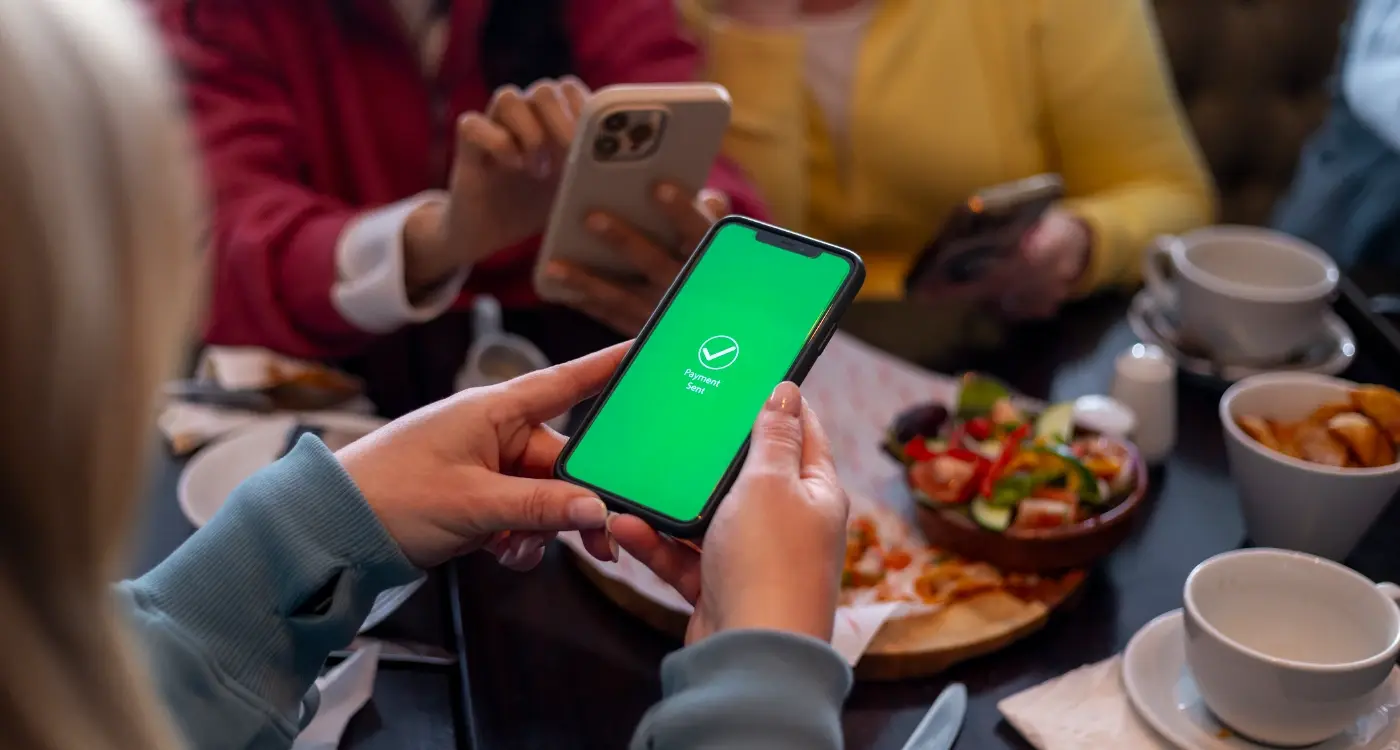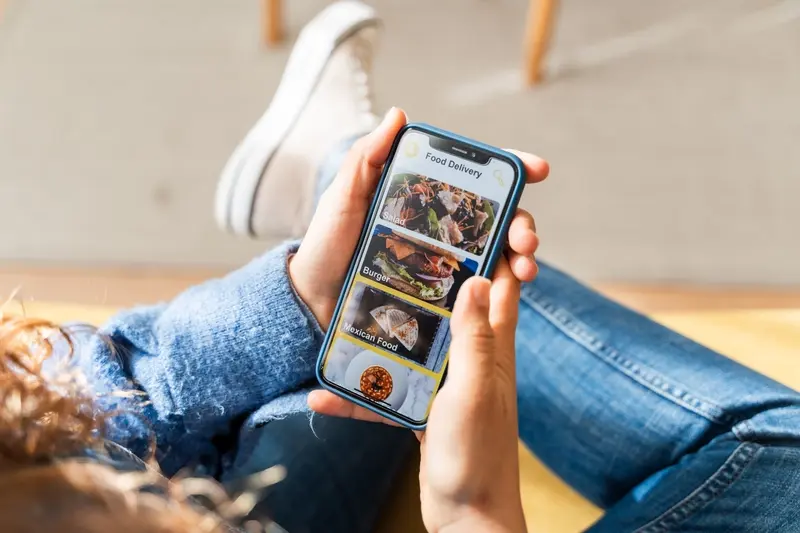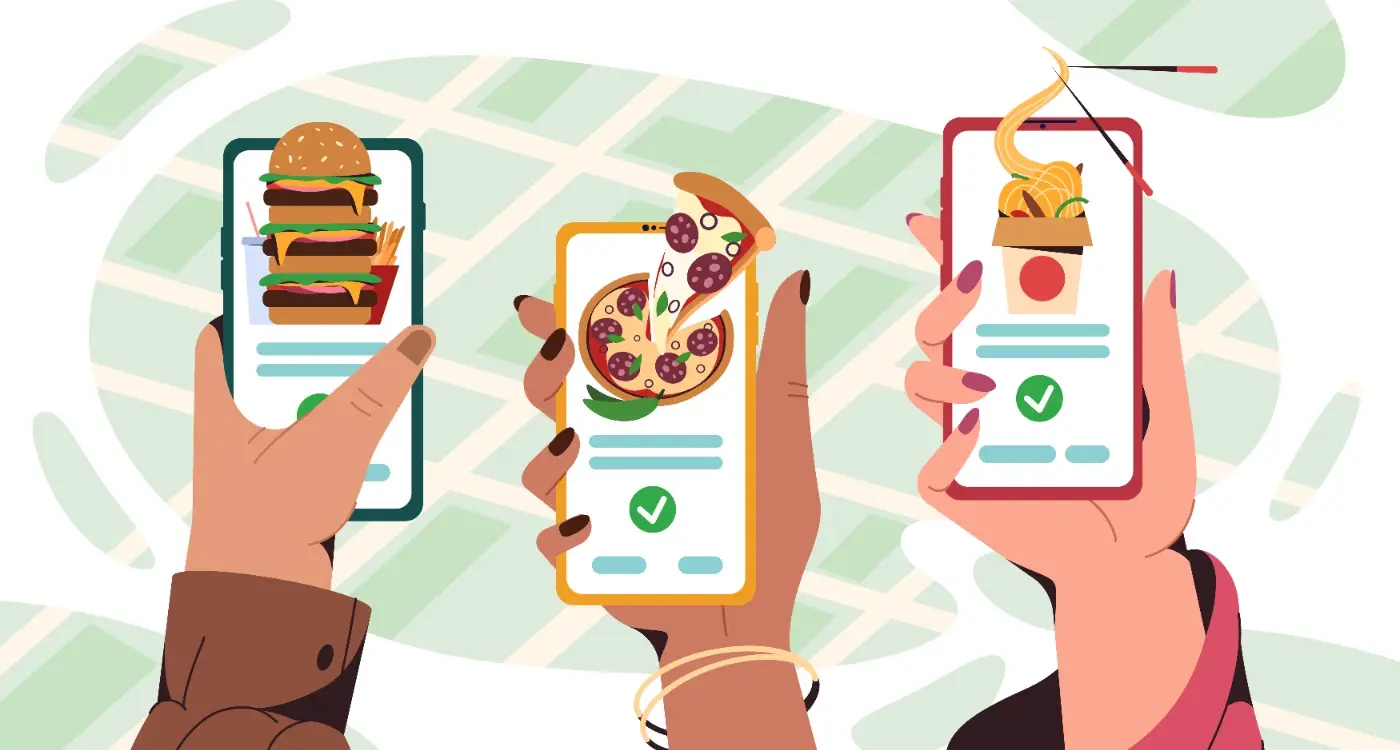How Much Does It Cost to Build a Restaurant App Like Deliveroo?
Food delivery apps generated over £4.2 billion in revenue last year in the UK alone—and Deliveroo sits right at the heart of this massive market. If you're thinking about building a restaurant app that can compete with the green-and-white giant, you're probably wondering about one thing above all else: how much is this going to cost me?
The short answer? It depends. The longer answer involves understanding that app development costs aren't just about writing code and pushing buttons. You're looking at everything from user interface design to payment processing, real-time tracking to restaurant management systems. Each feature adds complexity, and complexity adds cost.
Building a food delivery app isn't just about connecting hungry customers with restaurants—it's about creating an entire ecosystem that works seamlessly for users, restaurant partners, and delivery drivers alike
What makes this particularly tricky is that most people underestimate what goes into an app like Deliveroo. They see the sleek customer-facing interface and think "how hard can it be?" But behind that simple ordering process lies a sophisticated network of backend systems, APIs, and integrations that make the magic happen. We'll break down these costs component by component, so you can make informed decisions about your food delivery app project without any nasty surprises down the line.
Understanding Deliveroo's Core Features
When I'm working with clients who want to build restaurant apps, Deliveroo comes up in conversation more often than any other platform. There's a good reason for that—they've mastered the art of making food delivery feel simple and reliable. But what exactly makes Deliveroo tick? Let's break down the features that make this app so successful.
At its heart, Deliveroo is built around three main user groups: hungry customers, busy restaurants, and delivery riders. Each group gets their own experience, but they're all connected through the same system. The customer app lets people browse restaurants, place orders, and track their food in real-time. The restaurant interface manages incoming orders and updates availability. The rider app handles delivery logistics and route planning.
Key Features That Drive User Engagement
The features that keep people coming back to Deliveroo aren't just the obvious ones. Yes, they have excellent search and filtering options, but they've also invested heavily in personalisation. The app learns what you like and suggests restaurants based on your order history. Their real-time tracking system shows you exactly where your food is—not just "it's on its way" but actual GPS tracking of your rider.
- Location-based restaurant discovery with filtering by cuisine, price, and delivery time
- Real-time order tracking with GPS integration
- Secure payment processing with multiple payment options
- Push notifications for order updates and promotional offers
- Rating and review system for restaurants and delivery experience
- Personalised recommendations based on order history
What really sets Deliveroo apart is how they've optimised the entire experience around speed and reliability. Their algorithm considers restaurant preparation times, rider availability, and delivery distances to give accurate time estimates. This level of sophistication doesn't happen by accident—it requires serious backend development and ongoing refinement.
Types of Restaurant Apps and Their Cost Implications
Not all restaurant apps are created equal—and that's something I've learned the hard way over the years. When clients come to me wanting to build "something like Deliveroo," I have to explain that there are actually three distinct types of restaurant apps, each with very different cost implications.
The first type is the single restaurant app. This is what most independent restaurants go for when they want their own branded ordering system. Think of your local pizza place or curry house with their own app. These are the most affordable option because you're only dealing with one menu, one location, and straightforward ordering functionality.
Then there's the multi-restaurant platform—the Deliveroo model. This is where things get expensive fast. You're not just building an app; you're building an entire ecosystem that handles hundreds of restaurants, thousands of menu items, complex logistics, and real-time tracking. The development costs here can be 10-15 times higher than a single restaurant app.
Cost Breakdown by App Type
| App Type | Typical Cost Range | Development Time |
|---|---|---|
| Single Restaurant | £15,000 - £40,000 | 3-6 months |
| Multi-Restaurant Platform | £150,000 - £500,000+ | 12-18 months |
| Cloud Kitchen Solution | £50,000 - £150,000 | 6-12 months |
The third type—cloud kitchen solutions—sits somewhere in between. These apps serve multiple virtual restaurants operating from the same kitchen, which means moderate complexity but still significant food delivery app development costs.
Before deciding on your app type, consider your target market size and available budget. A single restaurant app might generate better ROI than jumping straight into a complex multi-restaurant platform.
Breaking Down Development Costs by App Components
When I look at restaurant app development costs, I always break them down by individual components—it's the only way to make sense of the numbers. Each piece of your app has its own development time and complexity level, which directly affects what you'll pay.
The user registration system might seem straightforward, but you need email verification, password recovery, and social media login options. That's typically 20-30 hours of development work. Your menu management system is where things get interesting—dynamic pricing, ingredient lists, dietary filters, and real-time availability updates can push this to 60-80 hours.
Core Component Breakdown
- User authentication and profiles: £2,000-£3,500
- Menu display and management: £4,000-£6,000
- Shopping cart and checkout: £3,000-£5,000
- Payment processing integration: £2,500-£4,000
- Order tracking system: £3,500-£5,500
- Push notifications: £1,500-£2,500
- Restaurant search and filters: £2,000-£4,000
The payment gateway alone requires serious security considerations—PCI compliance isn't optional. GPS tracking for delivery updates adds another layer of complexity, especially when you factor in real-time driver locations and estimated arrival times.
Remember, these components don't work in isolation; they need to communicate seamlessly with each other and your backend systems.
Platform Choices and Their Impact on Your Budget
When building a food delivery app like Deliveroo, one of the biggest decisions you'll face is choosing which platforms to launch on. This choice will directly affect your development costs and timeline—sometimes dramatically.
You've got three main options: iOS only, Android only, or both platforms simultaneously. Going with just one platform initially can save you around 40-50% on development costs. Most restaurants I work with start with iOS because it tends to generate higher revenue per user, but Android has a much larger market share globally.
Native vs Cross-Platform Development
Native development means building separate apps for each platform using their specific programming languages. This approach typically costs more upfront but delivers the best performance and user experience. Cross-platform frameworks like React Native or Flutter can reduce costs by 20-30% since you're essentially building one app that works on both platforms.
The platform choice isn't just about budget—it's about where your customers actually are and how they behave
Long-term Cost Considerations
Don't forget about ongoing maintenance costs. Each platform requires separate updates, testing, and bug fixes. If you're working with a tight budget, starting with one platform and expanding later might be the smarter financial move, even if it means missing out on some users initially.
Design Complexity and User Experience Considerations
When I'm working with clients on restaurant apps, one of the biggest cost drivers they underestimate is design complexity. You might think a simple, clean interface would be cheaper—and you'd be right to some extent. But here's the thing: simple doesn't mean basic, and that's where costs can spiral.
A basic restaurant app with standard buttons and menus might cost around £8,000-£15,000 for design work. But if you want custom animations, interactive elements, or that smooth Deliveroo-style experience? You're looking at £20,000-£40,000 or more. The difference comes down to the hours needed; a custom food carousel with smooth transitions takes weeks to perfect, whilst a standard list view takes days.
User Experience Drives Development Time
The user experience decisions you make have a direct impact on development costs. Features like real-time order tracking with moving maps, sophisticated filtering systems, or personalised recommendations all require significant backend work. Each interactive element needs to be coded, tested, and optimised for different devices.
My advice? Start with a clean, functional design that covers your core features well. You can always add complexity later once you understand how users actually interact with your app. This approach saves money upfront and gives you real data to guide future design investments.
Backend Development and Third-Party Integration Expenses
When building a food delivery app like Deliveroo, the backend is where the real magic happens—and where costs can quickly spiral if you're not careful. The backend handles everything users don't see: processing orders, managing payments, tracking deliveries, and storing all that precious data. For a Deliveroo-style app, you're looking at roughly 40-60% of your total development budget going towards backend work.
Third-party integrations are another major expense that catches many people off guard. Payment processors like Stripe or PayPal typically charge 2.9% plus 30p per transaction, but the integration work itself can cost £5,000-£15,000 depending on complexity. Then there's mapping services—Google Maps API costs around £4 per 1,000 requests, which adds up fast when you're tracking hundreds of deliveries daily.
Essential Backend Components
Your app will need user authentication systems, order management databases, real-time tracking capabilities, and notification services. Push notifications alone can cost £200-£500 monthly through services like Firebase. Don't forget about SMS notifications for delivery updates—these typically run 4-8p per message.
Ongoing Integration Costs
Beyond the initial setup, you'll face monthly fees for cloud hosting (£300-£2,000), database management, and API calls. The beauty of third-party services is they scale with your business, but so do the costs.
Start with essential integrations first and add premium features later. Many payment processors offer sandbox environments for free testing, which can save thousands during development.
Conclusion
Building a restaurant app like Deliveroo isn't cheap—and I won't pretend it is. You're looking at anywhere from £15,000 for a basic version to well over £100,000 for something that truly competes with the big players. The reality is that most businesses fall somewhere in the middle, spending around £40,000-£60,000 to get something decent off the ground.
What I've learned over the years is that cutting corners early on almost always costs more in the long run. Sure, you could skip the real-time tracking or go with a basic design, but your users will notice. They're used to slick experiences now, and anything less feels outdated before you've even launched.
The platform choice alone can swing your budget by 30-40%. Native apps cost more upfront but perform better; cross-platform saves money but comes with trade-offs. Backend development and third-party integrations—payment gateways, mapping services, SMS providers—these aren't optional extras anymore, they're table stakes.
My advice? Start with your core features, budget properly for the essentials, and plan for ongoing costs. Your app won't be finished when it launches; it'll need updates, bug fixes, and new features to stay competitive. Factor that into your planning from day one.
Share this
Subscribe To Our Learning Centre
You May Also Like
These Related Guides

What Features Should My Restaurant App Have to Compete with Just Eat?

How Long Does It Take to Develop a Food Delivery App From Scratch?



